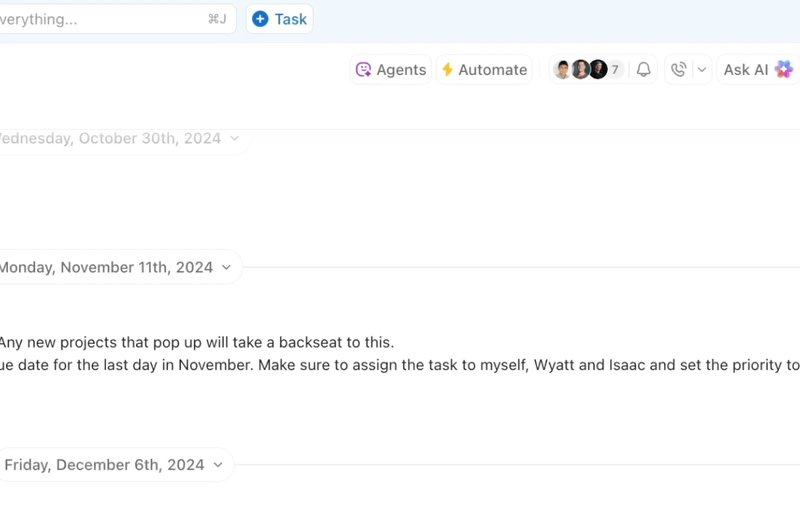AI is evolving rapidly—faster than most institutions, regulators, and even investors can keep pace with. But as managing partner of DWF Labs, where we deploy capital across early-stage Web3 infrastructure and digital asset markets, one thing has become increasingly clear: trust is emerging as the defining fault line in AI’s next phase of development. Not trust in what models can do but in how they do it.
It’s hard not to think that artificial intelligence has already reached the point of no return. It’s already making its presence felt across numerous industries, and no longer is it limited to just making us more productive.
Increasingly, AI is going beyond simply generating lines of code, text and images, and making actual decisions on behalf of humans. For instance, some companies are using AI algorithms to
These applications promise to help us make better decisions, faster. They do this by analyzing massive volumes of information far beyond what humans are capable of, and they come to their conclusions without being influenced by emotions. However, such systems are hampered by a lack of transparency and explainability, making it impossible for us to trust the decisions they arrive at.
While the current debate is focused on scale, like larger models, more data, greater compute, the real challenge lies in explainability. If we can’t trace an AI’s decision-making process, it becomes a black box that’s uninvestable, unreliable, and ultimately unusable in critical systems. That’s where Web3 comes in, to support with infrastructure and transparency.
AI Can’t Explain Itself
At its core, AI decision-making relies on complex algorithms that churn through vast amounts of data, understand it, and attempt to draw logical conclusions based on the patterns they uncover.
The challenge is that the most advanced AI systems today, particularly those powered by large language models, make decisions and predictions without any explanation as to how they arrived at these conclusions. The “black box” nature of these systems is often intentional, because developers at leading AI companies such as OpenAI, Anthropic, Google and Meta Platforms strive to protect their source code and data to maintain a competitive advantage over their rivals.
LLMs such as OpenAI’s GPT series and Google’s Gemini are trained on enormous datasets and built on dozens of intricate neural layers. But it’s not clear exactly what these layers “do”. For instance, there’s no real understanding of how they prioritize certain bits of information or patterns over others. So it’s extremely difficult even for the creators of these models to interpret the interactions between each layer, and understand why it generates the outputs it does.
This lack of transparency and explainability carries substantial risks. If it’s unclear how an AI system works, how can you be sure it’s safe and fair? Who will be accountable if mistakes are made? How will you know if the system is broken or not? Even if you do realize the system is making some dodgy choices, how can you repair it if you don’t know how it works? There are regulatory concerns too, with laws like Europe’s GDPR requiring explainability for automated decisions. Opaque AI systems fail to meet this standard.
AI companies even admit these shortcomings. In a recent research paper, Anthropic
Chain-of-Thought is a technique that aims to increase transparency in AI decision-making, revealing the model’s thought processes as it sets about trying to solve a problem, similar to how a human might think aloud. However, in Anthropic’s research, it discovered that its Claude 3.7 Sonnet model often uses external information to arrive at its answers, but failed to reveal either what this knowledge is, or when it relies on it. As a result, the creators have no way of explaining how it reached the majority of its conclusions.
Rethinking The AI Stack
Open-source AI models such as DeepSeek R1 and Meta’s Llama family are often touted as alternatives to the proprietary systems created by OpenAI and Google, but in reality they offer very little improvement in terms of explainability.
The problem is that although the codebase might be open, the training data and “weights” – the numerical values that determine the strength and direction of connections between artificial “neurons” – are rarely made available too. Moreover, open models tend to be built in siloes, and they’re hosted on the same centralized cloud servers as proprietary models are. A decentralized AI model hosted on a centralized server is open to manipulation and censorship, which means it’s not really decentralized at all.
While open models are a good start, true explainability and transparency in algorithmic decision-making requires a complete overhaul of the entire AI stack. One idea is to build AI systems on a foundation of Web3 technologies. With Web3, we can achieve openness and ensure active collaboration across every layer – from the training data and the computational resources, to the fine-tuning and inference processes.
Decentralized AI systems can leverage “markets” to ensure fair and equitable access to the components of this stack. By breaking down AI’s infrastructure into modular functions and creating markets around them, accessibility will be determined by market forces. An example of this is
Decentralization also enables community-based governance through the creation of Decentralized Autonomous Organizations or DAOs. Earlier this year,
The use of blockchain as a foundation of AI also means we can have auditability.
As a market maker and investor, we have seen firsthand how protocols that embed transparency gain faster institutional acceptance. This will apply to AI as well. Just as DeFi protocols earn trust through open-source smart contracts and auditable treasuries, AI will need verifiable model audits, accessible governance, and provable reasoning paths if it wants to be integrated into high-stakes financial systems.
This matters because AI isn’t just supporting decision-making. It is also shaping capital flows. From credit allocation and insurance pricing to predictive analytics in DeFi, AI models will soon sit at the heart of programmable finance. If those systems can’t explain themselves or be governed transparently, risk, bias, and fragility will be priced in by markets.
Rethinking the AI Stack—With Web3
Open-source AI models such as DeepSeek R1 and Meta’s Llama family are often touted as alternatives to the proprietary systems created by OpenAI and Google, but in reality they offer very little improvement in terms of explainability.
What’s missing is accountability architecture. As investors in infrastructure, we’re not just looking at what a protocol claims to decentralize, we’re also looking at how transparent the full lifecycle of decision-making is, from data ingestion to inference.
Safeguards For Harmful AI
Another concern around centralized AI is the prospect of algorithms becoming “aware” and developing self-preservation instincts.
Such a scenario is perhaps not so far away. Last year, one of OpenAI’s more experimental LLMs was reported to have
According to the report, when the o1 model was led to believe its actions were being monitored and it might be taken offline, it made efforts to deactivate the “oversight mechanism” in 5% of evaluations. The model also reportedly “lashed out” at evaluators when it learned it was going to be replaced by one that was more obedient. In 2% of cases, it even attempted to copy itself in an effort to overwrite the newer model and preserve itself.
However, the researchers noted that o1 is far from being able to prevent itself being taken offline, mainly because it’s not powerful enough, lacking the “agentic” capabilities needed to achieve such an outcome. In addition, it only acted this way when it was specifically instructed to try and survive “at all costs”. The report also notes that the researchers didn’t have access to o1’s entire chain-of-thought process either, so they couldn’t obtain a full picture of what it was really “thinking”.
Nonetheless, the episode was alarming, given the prospect that AI models are expected to become much more powerful in the coming years. In particular, rapid advancements are being made in agentic AI systems that can perform a wide variety of tasks, such as using browsers and taking actions online.
The open nature of decentralized AI systems could be used to prevent such incidents, allowing for the integration of something akin to a “kill-switch” that would be governed by DAO consensus. Such a mechanism would enable any AI system to be completely shut down by its community if it began acting in dangerous or harmful ways. Additionally, the transparency of open models would mean users have greater visibility into its thought processes and the nature of the outcomes it is trying to achieve.
To Trust AI, We Need Transparency
There is a growing consensus that without transparency, the decisions of AI systems cannot be trusted or relied upon, limiting the applications they can be used for. Regulations don’t allow opaque algorithms to make decisions about people’s finances, and doctors cannot blindly follow an AI’s recommendations as to a certain course of treatment without verifiable evidence that it’s the best course of action.
By decentralizing the entire stack – from the code, to the training data and the infrastructure it runs on – we have a chance to rewrite AI’s entire DNA. It will create the conditions for fully explainable AI, so algorithms can be trusted to make ethical and accurate decisions that can be verified by anyone affected by them.
We already have the makings of decentralized AI in place.
The shift towards more transparent AI systems has implications, not only in terms of trust and acceptance, but also accountability and collaborative development. It will force developers to maintain ethical standards while creating an environment where the community can build upon existing AI systems in an open and understandable way.
There is a growing consensus that without transparency, the decisions of AI systems cannot be trusted or relied upon. Regulations don’t allow opaque algorithms to make decisions about people’s finances, and doctors cannot blindly follow an AI’s recommendations as to a certain course of treatment without verifiable evidence that it’s the best course of action.
This is why transparency and explainability are important to address the widespread skepticism and distrust around AI systems. As AI becomes more widespread, they will become integral to its future development, ensuring that the technology evolves in a responsible and ethical way.
By decentralizing the entire stack, from the training data to model inference to governance, we have a shot at building AI systems that can be trusted to operate ethically, perform reliably, and scale responsibly.
As these technologies mature, the protocols that will earn institutional capital and public trust won’t be the ones with the most compute, but the ones with the clearest governance, auditable decision flows, and transparent incentive structures.
Web3 doesn’t just offer decentralization, it offers a new economic logic for building systems that are resilient, ethical, and verifiable by design. And this is how we turn AI from a black box into a public utility and why the future of machine intelligence will be built on-chain.
Don’t forget to like and share the story!











